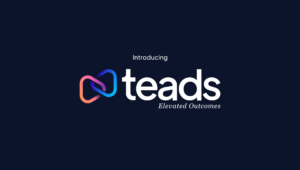Tom Jenen Talks About The IDG Partnership And The Benefits Of The Private Exchange Model
by Ciaran O'Kane on 25th Jan 2011 in News


You are going to see lots of private exchanges appearing on the European display landscape over the next twelve months. Publishers, looking to open their inventory to a controlled group of real-time buyers, will look to partner a SSP and launch their own private exchange. Admeld has already inked a deal with the Weather Channel, and is now helping IT vertical network, IDG, make inventory available to automated buyers. Tom Jenen, Commercial Director, AdMeld EMEA, spoke to ExchangeWire this week about the partnership, the impact it will have on the European market, and the benefits of a private exchange strategy to vertical-focused publishers, like IDG.
Can you give an overview on how this new partnership will work between AdMeld and IDG?
AdMeld is powering the technology behind the IDG TechNetwork’s new private exchange. Called TMX, it is the industry’s first private exchange focused exclusively the technology vertical.
Will IDG inventory be accessible through the AdMeld platform? How can a buyer integrate with the IDG private exchange?
IDG is inviting select buyers to participate in the exchange—those they deem are well-suited to the vertical and understand the value of their users and content. Because the overwhelming majority of the world’s programmatic buyers are already integrated into the core AdMeld platform, no additional work will be necessary on their part. New buyers simply contact AdMeld and we’ll walk them through the straightforward integration process.
Can you talk about the features of the IDG private exchange? Is it primarily a means of managing buyers, protecting the price paid for impressions, or opening up more inventory to RTB?
In short, it’s really about all three of these things. I’ll go into more detail on each below.
What are the benefits of IDG running its inventory through a private exchange?
Over time, IDG has developed immense brand equity and expertise in aggregating and selling technology audiences – starting with their owned-and-operated properties such as PCWorld and Macworld. In 2008 they launched their TechNetwork, which today aggregates premium technology audiences across more than 460 high-quality, independent sites spanning business technology, consumer technology, digital entertainment, and video games worldwide.
The company has had great success attracting premium buyers and sellers to the TechNetwork, and what the private exchange allows them to do is take this all a step further. It gives them controlled access to a whole new group of buyers and budgets coming through RTB, and it increases their ability to help their publishers monetise their inventory, which in turn will attract more premium sites into their network.
Couldn’t a media seller, like IDG, get the same control in other exchanges, like Adx?
The beauty of a private exchange is that IDG can customise their controls on a much more granular level than possible on one of the large, demand-focused exchanges. For instance, instead of just assigning floors and blocks to individual trading desks, DSPs, and advertisers, they can create rules based on specific combinations of those players. It’s the difference between performing surgery with an axe or with a scalpel.
But it’s not just about control. Demand-focused exchanges give publishers very little in terms of insights about the composition of their audience, its value, and who is bidding on it. Publishers that have traded via traditional networks have typically not had this information, but having that kind of visibility is like turning the lights on in a dark room. These capabilities enable IDG to identify incremental revenue opportunities (including direct sold ones) and capture demand at a level that many independent properties probably couldn’t do on their own.
Why is there a move towards the private exchange model? What’s the motivation?
AdMeld is building private exchanges for Weather.com and other publishers, and we believe that more publishers will take this route this year. For publishing brands with a very large, differentiated, high quality audiences, private exchanges are a great way to access the increased funds that agencies are channeling through automated buying platforms while also maximising the value of their audience data. As you’ve said on this site, the private exchanges are a win-win for publishers as well as buyers, who gain easy access to those high quality audiences.
Are there more verticals on the way? Travel? Auto? Are we likely to see more vertical-specific private exchanges popping up on the market this year?
Absolutely, though I think it’s important to emphasise that the solution isn’t right for every publisher. It’s really meant for those with a particular scale and brand equity in the market, and IDG and The Weather Channel are the first two of many examples who fall into that category. I’m sure we’ll see a number of other efforts in the coming months.
DisplayExchangeProgrammaticPublisher








Follow ExchangeWire